“It’s hot. It's like, Africa hot. Tarzan couldn't take this kind of hot."
– Neil Simon, Biloxi Blues
The June Caribbean sun beat down on my bare legs, and I knew, despite slathering on a despicably generous gob of SPF 50 sunscreen, that I was going to hate my decision that morning to eschew fishing pants. But mostly, I was wondering what on earth I was doing in Belize in June, when the both air temperature and the humidity percentage managed to cross paths somewhere in the mid-90s.
It was stifling. But as our guide, John “The Tarpon King” Moore, poled us around the flats outside the mouth of the Belize River, I could handle the heat, at least for the moment. We’d scared up a few nice bonefish and, on the way out to the flats earlier that day, we stopped to admire a pod of manatees and a few rolling tarpon that seemed ungodly big to two Americans who live most of the year in northern climes. We cast to the rolling fish on the outgoing tide, but no luck.
And that’s not what matters. Yes, certainly, tarpon matter, but as we cruised out of the river and across the bay, John cut the panga’s motor and we slid into a group of mangrove cays. This is where the story really starts.
As we continued our first-day hunt for the “big three,” (tarpon, bonefish and permit) we came to an appealing little choke point in the mangroves – any flats angler understands what I mean. A deeper (but still not terribly deep) channel carves its way from the “outside” flats to the “inside” flats, and there’s a noticeable current that pushes in during high tide and rushes out during the falling tide. The water was pushing out as the flats drained with the morning tidal exchange.
As the panga glided toward the cut in the mangroves, this fishy little superhighway burgeoned with life. We marveled at the schools of bonefish working their way out to the green Caribbean, and, around the roots of a gnarled old mangrove, snappers — some small, but some pretty big, too — darted in and out after passing baitfish that moved with the falling tide. On the edges, waiting for one of the snappers to screw up and leave the cover of the root ball for a split second too long, a pair of two-foot-long barracudas lurked in the slightly murky water.
And then my fishing partner for the day, Camden, an amenable 20-something winter surfer from Maine, pointed and simply asked, “What’s that?”
I followed his arm into the water and there, not 40 feet away, was a big jack crevalle — a beast of a predator. Even the ‘cudas gave this big fish a wide berth.
“That’s a big f*cking jack,” I said unapologetically. “Hand me that tarpon rod.” Camden reached up and traded rods with me — a fun little 7-weight perfect for Belizean bones for a 10-weight stick that sported an 80-pound bite tippet and size 2 Tarpon Toad. The exchange was clean, and with my eyes on the big jack, I flipped a serviceable cast in the fish’s direction.
Fishing for big predators on the flats can be hit and miss. Often, the larger jacks and ‘cudas remind you that they got big for a reason — they’re crafty creatures who have a survival force that many flats fish just don’t possess. Take bonefish, for instance. While they can be wary, rarely would any season skinny-water angler assign “crafty” to a 3-pound bone. Spooky? Sure. Skittish? Yes. Challenging? Certainly. But these fish will often follow a Gotcha without a moment’s hesitation and they’re easily the most-caught flats target in the tropics. That’s not to say bonefish are just another dumb fish — they are not. In certain instances, they offer an incredible challenge, and, like most inshore saltwater fish, the fight is the real appeal.
But a big, 25-pound jack? Crafty works. So does “angry” and even “diabolical.” I can’t count the times, after spotting a fish that size and putting a fly within sniffing distance, that the wise old fish just vanished into the ether as if to say, “Nice try, asshole.”
But on this sticky-hot June day, when the Tarpon Toad landed about 5 feet in front of the slowly cruising fish, the jack didn’t retreat. Instead, it charged the hapless pattern and sucked it in.
“Holy shit,” I heard Camden mutter. John, from the platform, giggled a little bit.
“He got it, man,” he said, his creole accent shining through. “Now what ya gon do?”
I strip-set and pulled hard, and the cut in the mangroves turned into a rodeo. The jack’s surprise at being hooked was only equaled by my shock at actually hooking it. The tail thrashing ensued, and every other fish in that little lair on the flats scattered. Within seconds, I watched as the backing knot slipped through the guides on the heavy 10-weight, and my answer to John was simple.
“We might have to go after it,” I said, the rod pumping up and down in my hands as the big fish the shape of a Thanksgiving serving platter screamed into the distance, even as I tightened the drag and started to fight back a bit.
And then Camden broke the tension.
“How come I never hear people talk about fishing for jacks?” he asked.
How come, indeed?
Underappreciated
It could be, of course, that most flats anglers don’t often come in contact with a truly big jack. Most of the yellowtail jacks, blue runners and horsehead jacks that we see when we’re chasing bonefish or permit show up as one of two things: A) a diminutive little side piece — something to break up the monotony when the bones or the permit stop showing up, or B) a small-ish pest that grabs a fly meant for a different fish. And even then, when we deem these plentiful fish worthy of a fly cast, we’re often left flexing sore arms and fingers once the fight is done. For even the smallest jack — an eight-inch fish the size of a nice bluegill — is, pound for pound, the strongest fighting fish on the flats. Period.
And, honestly, while the smaller blue runners and yellowtail jacks are downright beautiful, a giant jack crevalle shows up as kind of gray and bland on the flats. And, to anglers like me who tend to anthropomorphize and assign fish an “attitude,” big jacks are street bullies. They like to throw their weight around, and when they’re schooled up with others their size, they are intimidating to just about every other fish on the flats. But, usually, when challenged by a good cast or presented with a perfectly tied Clouser, the larger fish are not easily tempted to fight. Often they run and hide.
But when they don’t …
Availability
As a football fan, this is maybe the “x-factor” with jacks. I like a good pave-the-way offensive line — a sort of synchronized chaos that moves bodies and opens lanes for glory-grabbing running backs. Unfortunately, as is common with most good offensive lines, one or more of the starters is usually hurt or at least dinged up.
Apply that logic to flats fishing. On this day, it was miserable hot, and by the time we spotted the willing jack, just about every other fish on the flats had kind of given up. They were hot. They were moving out with the tide. They were on IR until the tide changed and fresher, cooler water from the Caribbean started refilling the flats.
But not that jack, and, frankly, not most jacks. These opportunists will kind of post up in these fish-filled choke points — just like the place we found under the scorching June sun — and wait for their next meal. This makes them eminently available to anglers, even if big ones like the one we caught, are the exception and not the rule.
As my old football coach used to say, sometimes, the best ability is availability.
Amenability
While the big jacks on any given tropical flat might be wise and crafty, the smaller fish can be downright braindead. Jacks the size of your palm are like bluegill, only with attitude and 100 times the strength and determination. Bigger fish, but not big fish, present an opportunity to feel the tug, and when the bones have ghosted off the flats and the permit are no-shows, having a guide who knows where to find a good “jack hole” is a bonus.
And, as the unrelenting sun bolstered by the ever-present tropical sultriness continued to beat down on our heads, John knew just what to do. Not too far from a little outpost camp well out into the emerald-green waters of the flats, a set of old dock pilings is slowly withering away. But the water is deeper there, and 2- and 3-pound jacks lurk next to the wood, ready to pounce on a fly. A Clouser fished deep is usually all it takes to get into these willing fish, and after slack tide passed, and both of our arms were worn out, we ventured back into shallower water and waited for the bones and permit to return with the fresh push of seawater.
But I’ll always have a soft spot in my heart for jacks — big or small. Big fish will test your tackle and your mettle. The smaller fish will keep you entertained and, if your guide has the means to deliver a few to the kitchen, they make a great little appetizer before dinner.
The little ones? Yeah, I love them, too. No other small fish on the flats fights so big.
But mostly, I just love the chance to tie into fish that, once they’re hooked, fight so hard at not being hooked. Even on the hottest days when nothing else is happening, the jacks are still there. Dependable. Available.
So don’t sing the praises of flats fish without adding the jack crevalle to the list of targets. Jacks deserve our respect. They are absolutely worthy of a fly cast. Perhaps even more so than some of their more appreciated brethren.




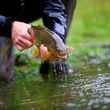

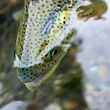





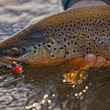




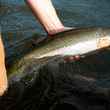




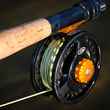




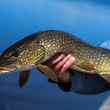


Comments
Carl C. replied on Permalink
It has always puzzled me that many flats anglers would jump at the chance to fly half way around the world for the chance to catch a giant trevally but will sneer at jacks.
Pages